The content of the article
Well, who said that caring for ficus is easy? Even the usual forms, under the wrong conditions, immediately react with yellowing and dropping leaves. And how variegated forms are capricious ...
But this plant is very decorative and all efforts are paid off handsomely with a lush crown and lush growth. After reading this article, you don’t have to ring up friends with the words: “I don’t know why the leaves of the ficus turn yellow and fall. What to do?".
Of course, we will not consider the natural processes of aging. The loss of several yellow leaves in the fall or winter is quite normal. We will analyze the mass yellowing and the strongest deciduous ficus.
Wrong watering
The most common reason for changes in pigmentation and subsequent leaf fall is that you simply flooded the plant. Excessive soil moisture provokes rotting of the root system, plus it helps a lot of bacterioses and fusariums to kill your ficus. The leaves turn yellow throughout the plant, the soil starts to smell unpleasant. The bush itself becomes an incomprehensible dirty shade, sluggish. On the cut, instead of milky juice, brown liquid is released.
What to do? Urgently stop watering the plant. It’s better to leave him alone. It is strictly forbidden at this time to drag the pot and even turn around its axis. The only thing you can do is put it on a stack of dry napkins or paper towels. Through the drainage holes, excess moisture must be absorbed into the loose paper.
After 5-7 days, the ficus is carefully examined again. If there is any movement towards improvement, then first learn tips for proper care. Otherwise, you will finish the poor fellow.
If no improvement is expected, then:
- They pull out the ficus from the old soil, gently shake it.
- Under the weak pressure of warm water, the roots are thoroughly washed.
- With a sterile blade or knife, cut off all rotten roots to a healthy tissue. You can’t confuse them with anything. Sick roots are soft, slippery, sprawl in the hands, smell unpleasant and dark, almost black, color.
- All sections are sprinkled with crushed activated carbon and slightly dried in the open air.
- Then the ficus is planted in another container and new soil.
It is important to compact the soil so that the roots can immediately receive nutrition. Just don’t have to knead with your foot! Press lightly with palms.
In the first 2-3 weeks, you can not feed the ficus and rearrange it to another place. Subsequently, strictly observe the time and technology of proper watering, so as not to torture the plant completely.
Cold
In general, many problems are very clearly manifested in ficuses with yellowing of leaves. And to relieve their plant passion as he loves! Don’t feed bread, let me arrange fall foliage.
For example, cold ambient air, the slightest draft, cooling of the root system. Or in winter, the leaf will touch the glass, looking, and it is already turning yellow.
What to do? In every possible way protect the ficus from the cold. A foam plate is placed under his legs, a foam insulation or even a cork stand. An ordinary board will do.
Protect it from drafts. Aerate well, but make sure that it is not drawn by cold air. In winter, an insulator is moved away from the glass or even put. It can even be a simple piece of wool or a piece of cardboard.
Water for watering, too, should not be cold from the tap immediately or the well. Room temperature will be optimal for drinking ficus. And certainly it will not subcool the roots.
Transfer
Ficuses are still touchy. They really do not like to be disturbed.Even a simple change of residence is fraught with yellowing and leaf fall. And then the whole event! A transplant is always stressful. After it, the ficus will surely turn yellow and fling leaves.
What to do? Try to touch the flower as little as possible. A transplant is not carried out annually, as some sources recommend, but only as needed. For example, when the roots begin to rise above the surface of the soil in a pot. At the same time, it is advisable not to gut the earthen lump, but only to transfer it whole into a large container. Then the gaps are filled with new soil, pressed by hands.
It is important to know that after a transplant it is strictly forbidden to drink ficus! Therefore, they fill up the new earth in a wet form. Then the flower is returned to its original place in the same position with respect to the light, as it was before. After about 8-9 days, you can carefully water the ficus for the first time. Well, then care and only care.
Micronutrient deficiency
Often, flower growers seem to be dancing with a tambourine near the ficus and what they just don't get up to, and he, such a scoundrel, again gives you his yellow leaves every morning. What is he missing yet? And he lacks nutrition. Magnesium, iron and nitrogen - these are the trace elements that prevent premature aging and yellowing of leaves.
What to do? Feed. Green liquid fertilizer is good, but it provides only nitrogen. A ficus needs a mineralochka. Top dressing is applied regularly, but little by little. Busting threatens with the same result as shortage.
If you are not a supporter of the use of chemical fertilizers, then give your ficus to a person with an opposite worldview, and buy yourself an artificial one. He certainly will not turn yellow.
Pests
Oh, these uninvited guests! Sometimes, you will not notice them immediately. And the leaves of the ficus, meanwhile, gradually turn yellow and fall. Carefully inspect the underside of the blades. It is there that whole colonies of parasites are often concentrated.
What to do? To poison mercilessly. Any systemic insecticide. And repeatedly. Most pests of indoor flowers just can not be deduced. In the meantime, granny infusions and decoctions from folk methods are being prepared, the ficus can die. After all, insects suck out all the nutritious juices and gnaw holes in the leaves.
Only strictly follow the instructions for use and do not exceed the dosage of the drug recommended by the manufacturer. This will not accelerate the process of getting rid of pests, but it certainly will not bring benefits to the plant.
Diseases
Just do not appear. They arise from hypothermia of the root system, are transmitted from other infected plants, are transferred with purchased soil. Signs of the disease are hard to miss. On the leaves, in addition to yellowness, brown spots of incomprehensible etiology appear. They are rapidly expanding, turning into weeping ulcers of a purple hue.
What to do? Save your pet immediately. Periodic spraying with any fungicide often corrects the situation and very quickly. In advanced cases, it is sometimes too late. In this case, you need to cut the cuttings from the remaining shoots and try to root them.
No doubt, an adult plant is sorry. But instead a few young ones will appear.
By the way, adaptogens are recommended for the quick recovery of slightly affected ficus. Epin, aloe juice or zircon very well activate the vitality of the plant and allow it to grow stronger and recover faster from the disease.
Why do ficus leaves turn yellow and fall. What to do? We know for sure. A capricious plant needs constant and proper care. Otherwise, your once lush bush may turn into a palm tree with a bunch on the top. Or even worse, it will become an ikebana. Love your plants and take care of them.
Video: Benjamin Ficus problems and solutions

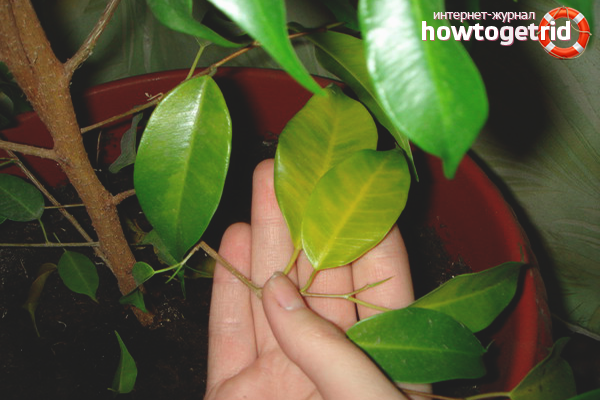
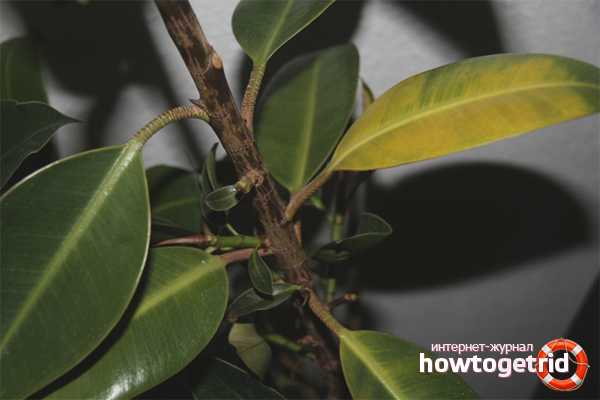

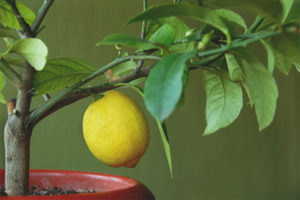
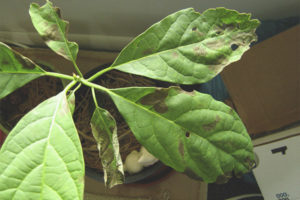
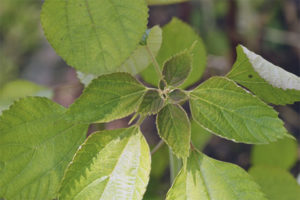

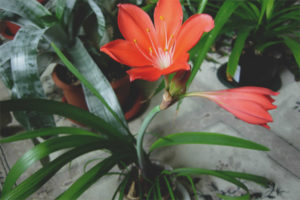

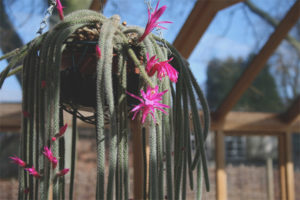
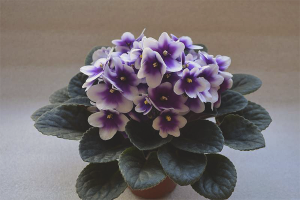
Submit